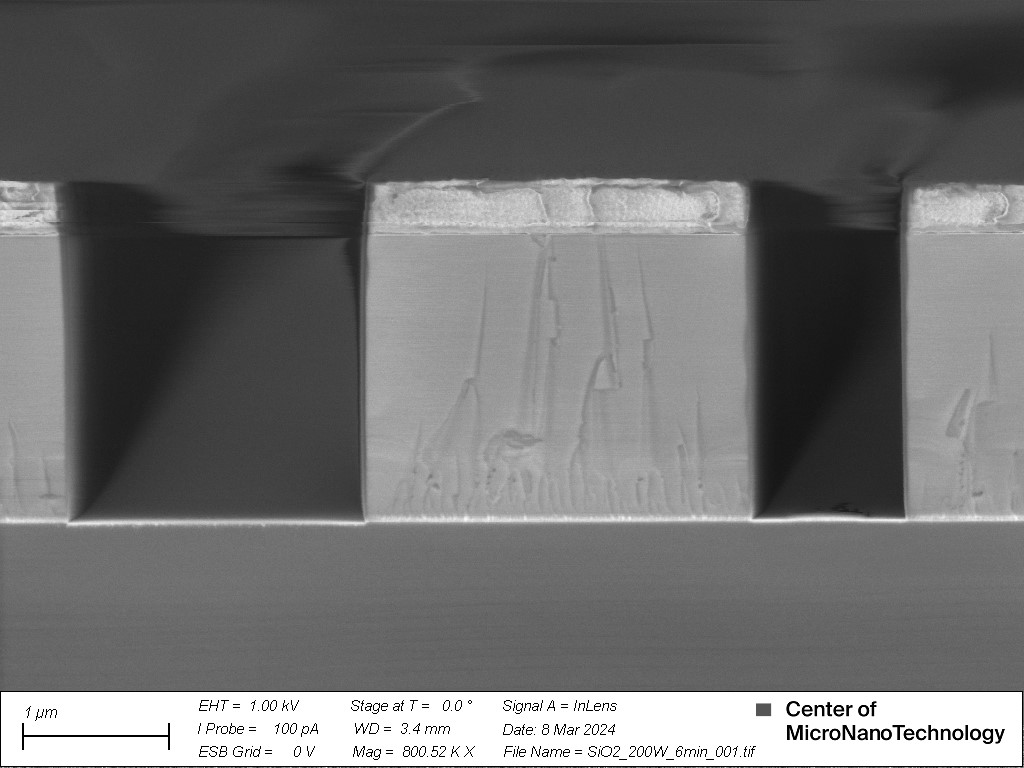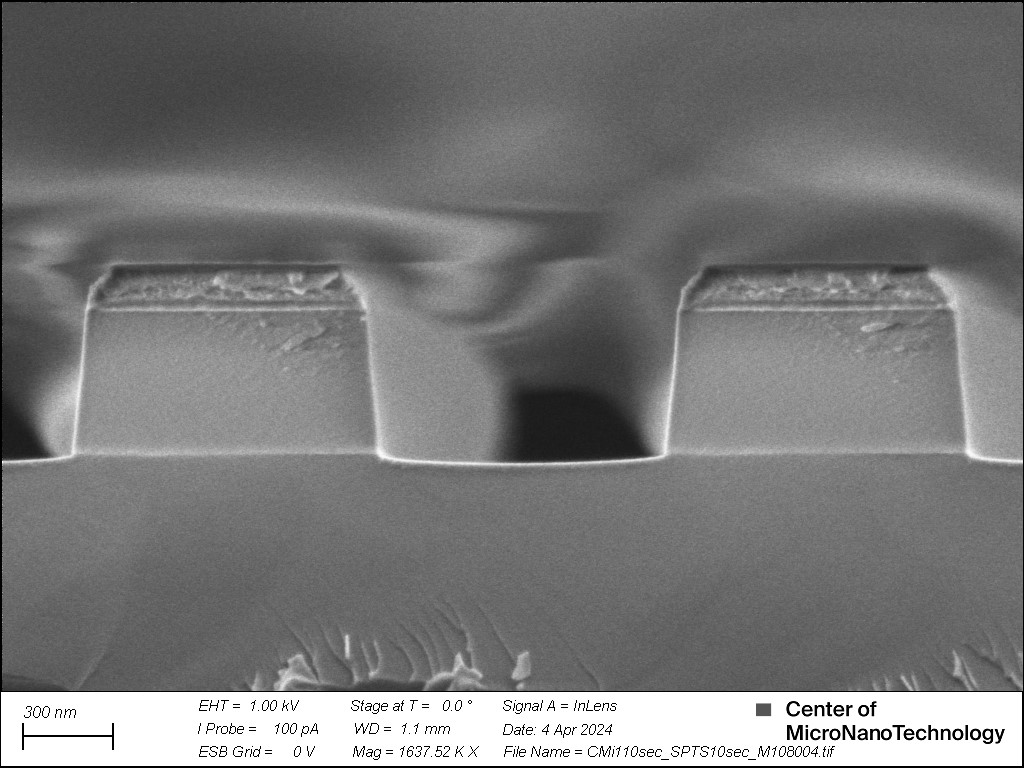Restrictions and Precautions
The SPTS Synapse etcher must NOT be exposed to any metallics or even traces of metallics. Wafers that were once in contact with layers of metallics (even buried), or traces of metallics (real or suspicion), must NOT be loaded in this etcher.
! Wafers that were once processed in SPTS APS etcher are not allowed in SPTS Synapse !
If any doubts, please get in touch with etching staff BEFORE proceeding.
! Wafers that were once processed in SPTS APS etcher are not allowed in SPTS Synapse !
If any doubts, please get in touch with etching staff BEFORE proceeding.
RESERVATION RULES AND BOOKING FEES POLICY:
1. Maximum allowed booking per person between 9am and 5pm is 2 hours. It is still possible to get 4 consecutive hours from 7am to 11am or from 3pm to 7pm.
2. Reservation names must correspond to operators.
1. Maximum allowed booking per person between 9am and 5pm is 2 hours. It is still possible to get 4 consecutive hours from 7am to 11am or from 3pm to 7pm.
2. Reservation names must correspond to operators.
Contents:
I. Introduction ↑
SPTS Synapse module is an ICP-based high density plasma source. This system was optimized for and is dedicated to the etching of SiO2 and SixNy layers.
Main features of the system are:
- High density plasma source
- Wafer voltage biasing independent from the ICP
- Electrostatic clamping => no EBR required
- Powerful gas process pumping arrangement
- Loadlock/chamber transfers for single wafer processing
- Control software offering fully automated processes
- End-point detection system (optical spectroscopy)
Gases availables:
- O2 [0 – 200 sccm].
- Ar [0 – 140 sccm].
- He [0 – 500 sccm].
- H2 [0 – 100 sccm].
- SF6 [0 – 200 sccm].
- C4F8 [0 – 60 sccm].
- CF4 [0 – 50 sccm].
- CHF3 [0 – 100 sccm].
II. Processes available ↑
On the Synapse etcher, a process is defined as a sequence of several steps:
- Wafer is loaded in, clamped and helium back cooling is switched-on.
- Wafer cooling condition is continuously checked throughout the process by a backside helium recorded flow for a preset pressure. The lower the flow for a given backside pressure, the better. The tool will warn and/or alarm in case the helium backside required conditions are not met.
- Wafer is etched with possibility of End-Point Detection (EPD) monitoring. EPD system is used in “monitoring only” mode and therefore it does not control the process chamber. If no action is done by the operator to manually stop the etching, the process will run until the set time has elapsed, even if an end point is detected by the EPD system.
- Dechuck step: electrostatic clamping is switched-off and a low power argon plasma runs for few seconds to help remove accumulated charges that may remain. No chuck biasing is applied here to ensure no sample damage by argon ions.
- The wafer is unloaded and, if necessary, an automatic cleaning of both the chamber and the chuck starts, stopping automatically upon end-point detection.
- Machine is ready for another run.
| Material DUV42P BARC from Brewer | SH temp (°C) 0 | Process name 00_CMi_BARC | Chemistry CHF3/O2 | Mask material JSR M108Y JSR M35G | Etch rate (nm/min) DUV42P: 120 | Selectivity/mask <1:1 |
| Material Si3N4 | SH temp (°C) 0 | Process name 00_CMi_Si3N4_Smooth | Chemistry CHF3/SF6/H2 | Mask material ZEP/CSAR PR | Etch rate (nm/min) Si3N4: 180 SiO2: 180 PR: 70 | Selectivity/mask >2.5:1 |
| Material Si3N4 | SH temp (°C) 0 | Process name APS_Si3N4_Smooth | Chemistry CHF3/SF6 | Mask material ZEP/CSAR PR | Etch rate (nm/min) Si3N4: 190 SiO2: 190 PR: 110 | Selectivity/mask >1.5:1 |
| Material SiO2 | SH temp (°C) 0 | Process name 00_CMi_SiO2_PR | Chemistry C4F8/H2/He | Mask material PR ZEP/CSAR | Etch rate (nm/min) SiO2: 320 PR: 80 | Selectivity/mask 4:1 |
| Material SiO2 | SH temp (°C) 0 | Process name APS_SiO2_PR_3:1 | Chemistry C4F8/H2/He | Mask material PR ZEP/CSAR | Etch rate (nm/min) SiO2: 400 PR:100 | Selectivity/mask 4:1 |
Clearing the PR mask after Si3N4 and SiO2 etch requires both dry and wet treatments:
- Start with an oxygen plasma using the Tepla GiGAbatch or the ESI3511.
- Then do a wet remover treatment using the Ultrafab wetbench.
- If necessary, remove final residues with the Tepla GiGAbatch or the ESI3511 again.
- If DUV resist on BARC was used as a mask, a 30sec dip in HF1% helps clear residues left from BARC layer.







